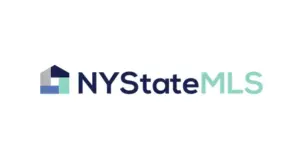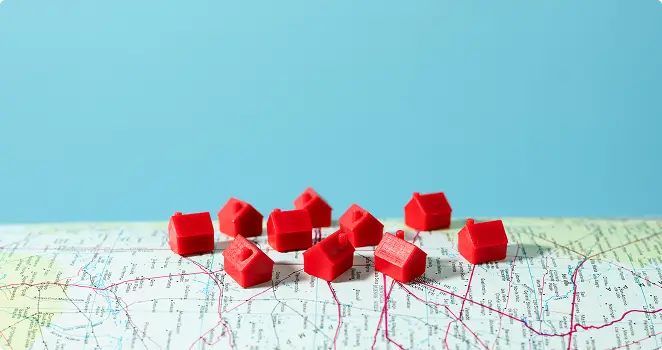Real estate marketing channels are the backbone of how agents in the US and Canada attract clients. Some channels deliver quick results but come with high costs, while others take more time yet build lasting returns.
Knowing which channels generate quality leads at a sustainable cost is the difference between overspending and growing profitably. Below is a breakdown of the most effective online and offline channels, backed by data from 2023–2025.
Organic Search (SEO)
When buyers search for “homes in Miami” or “condos in Toronto,” strong local websites appear. Agents who invest in SEO can capture these visitors. On average, about 3% of organic visitors become leads.
The cost per lead is $15–50 after the upfront investment in content and optimization.
The advantage is long-term ROI. Once your site ranks, each click is essentially free compared to PPC. When paired with IDX technology like what MLSimport.com brings into WordPress, those leads see live MLS listings that keep them engaged.
- Conversion: ~3%
- Cost per lead: $15–50
- Best for: consistent, compounding ROI
Strategy note
Real Estate SEO takes time to build, but it compounds. Compared to PPC, SEO costs less per lead over the long run. It’s strongest when supported by IDX-integrated sites, so buyers trust the data.
Pay-Per-Click (Search Ads)
Google Ads allow agents to target terms like “homes for sale in Dallas.” The results come instantly, but at a high cost. Real estate PPC campaigns average 1.5–2.5% conversion, with cost per lead in the $50–66 range.
Clicks alone aren’t cheap; they cost $2–8 each, often pushing the real cost of a qualified lead into the $80–220 range.
- Conversion: 1.5–2.5%
- Cost per lead: $50–66 (sometimes higher)
- Best for: fast results, filling pipelines
Comparison
PPC is the opposite of SEO. It’s expensive, but traffic starts the day you launch. For agents in new markets, PPC can deliver leads while SEO ramps up.
Social Media Ads
Most Realtors use social media: 92% use Facebook for marketing, and 54% rank it as their top lead tool. Paid ads on Facebook and Instagram generate cheap leads: $5–25 each on Facebook and $15–40 on Instagram. The average CPC is just $1.81.
The challenge is quality. Only 1–3% of these leads convert, often only after 6–12+ months of nurturing. That means you need a strong follow-up system.
- Cost per lead: $5–25 (Facebook), $15–40 (Instagram)
- Conversion: 1–3%
- Best for: filling the pipeline at low cost
Strategy note
Social ads bring volume, not immediate sales. Agents who pair social ads with email drip campaigns or CRM follow-up get the best results.
Email Marketing
Email remains a powerhouse. With 3–3.5% conversion rates, it tops most other channels. The cost per lead is $3–15, and industry studies show $36–42 in return for every $1 spent.
Email works best for nurturing: monthly newsletters or automated drip campaigns keep you top-of-mind. It’s also the easiest way to re-engage social or portal leads who aren’t ready yet.
- Conversion: 3–3.5%
- Cost per lead: $3–15
- ROI: $36–42 for every $1
Comparison
Email beats social ads in conversion rates and ROI. Among real estate marketing channels, social fills the pipeline, and email matures those leads into clients.”
Real Estate Portals
Sites like Zillow and Realtor.com attract high-intent buyers. That’s why 5–7% of portal leads convert, well above social ads.
Costs vary: Zillow leads cost $20–60 each, sometimes much higher in competitive ZIP codes. Realtor.com works on a subscription model: $200/month for shared leads or $1,000/month for exclusive leads, averaging $25–45 per lead.
Portal leads often close in 3–6 months, compared to 12+ months for Facebook leads.
- Conversion: 5–7%
- Cost per lead: $20–60+
- Best for: high-intent buyers/sellers
Strategy note
Portals deliver leads closer to a transaction. The cost is higher, but incubation is shorter. Compared to PPC, portal leads are warmer and often cheaper per client.
Referrals
Referrals are the highest quality source of business. 65% of sellers choose agents from referrals or past relationships. Industry studies peg internet referral conversion at around 2.7%, but warm, personal referrals close at much higher rates.
Cost per lead is essentially $0; referred clients carry about 25% higher lifetime value.
- Conversion: varies, often very high
- Cost per lead: almost free
- Best for: long-term, sustainable business
Comparison
No paid channel can match referrals for ROI. While SEO and email help generate new contacts, referrals keep businesses stable year after year.
Direct Mail
Postcards and flyers still matter for geographic farming. The average response rate is 3.3%, with 0.5–2% converting into clients.
The costs are significant: printing and mailing cost $0.50–$0.75 each. Sending 1,000 cards costs $500–750, and the effective cost per lead is $25–100.
- Response: 3.3%
- Conversion: 0.5–2%
- Cost per lead: $25–100
Strategy note
Direct mail works best for farming specific neighborhoods. It’s more expensive than email, but tangible mail can stand out where inboxes are crowded.
Cold Calling
Calling expired listings, FSBOs, or neighborhood homeowners yields about 2.2% conversion. The monetary cost (phone + dialer) is low, but the time investment is high.
- Conversion: ~2.2%
- Cost per lead: low dollars, high time
- Best for: agents with persistence and scripts
Comparison
Cold calling costs less in dollars than direct mail but more in time. For some agents, the payoff is listings without ad spend.
Open Houses and Networking
Open houses rarely sell the property directly, but they generate leads. Anecdotally, 10–15% of open house contacts convert into deals later.
Networking, chamber events, business mixers, investor meetups… they all build relationships. Conversion is hard to measure but often strong because of face-to-face trust.
- Open house direct sales: <5%
- Lead conversion from visitors: 10–15%
- Cost: mostly time
Print Advertising
Newspapers and magazines used to drive business, but today, they’re mostly branding. NAR surveys show that only a tiny percentage of buyers find agents through print. The cost per lead often exceeds $100.
- Conversion: very low
- Cost per lead: $100+
- Best for: luxury branding, seller appeasement
Outdoor Advertising
Billboards and transit ads create visibility, not leads. They cost thousands per month, with the cost per lead often in the hundreds.
By contrast, yard signs are inexpensive and effective. 4–7% of buyers find homes via yard or open house signs.
- Billboards: expensive, low direct ROI
- Yard signs: cheap, steady inquiries
Broadcast Media
Radio and TV campaigns increase awareness but rarely drive direct conversions. Conversion is well under 1%, and the cost per lead is $200–300+.
- Conversion: <1%
- Cost per lead: $200–300+
- Best for: large brokerages, developers, luxury projects
Comparing Channels
Looking at the data side by side shows clear patterns:
- Highest ROI: Referrals, SEO, and email. They cost the least per lead and convert at strong rates.
- Fastest but costly: PPC and portals. They bring clients quickly but at a higher CPL.
- Volume vs quality: Social ads fill the funnel, but you’ll need nurturing systems (like email) to make them pay off.
- Offline strength: Open houses, yard signs, and networking still deliver reliable leads at low cost. Direct mail and cold calling work but require more persistence.
- Branding channels: Print, billboards, and broadcast build recognition but are rarely efficient for individual agents.
No single channel wins for every agent. The most effective marketing mixes high-ROI organic sources (referrals, SEO, email) with select paid options (PPC, social, portals) and trusted offline efforts (open houses, signs, networking).
By balancing short-term results with long-term growth, agents avoid overspending on expensive ads while building a stable referral-driven business. Tools like mlsimport.com strengthen online strategies by keeping MLS listings updated, which improves SEO and user trust.
Smart marketing is about numbers. Know your costs, track your conversions, and invest in the channels that fit your goals.
Table of Contents







